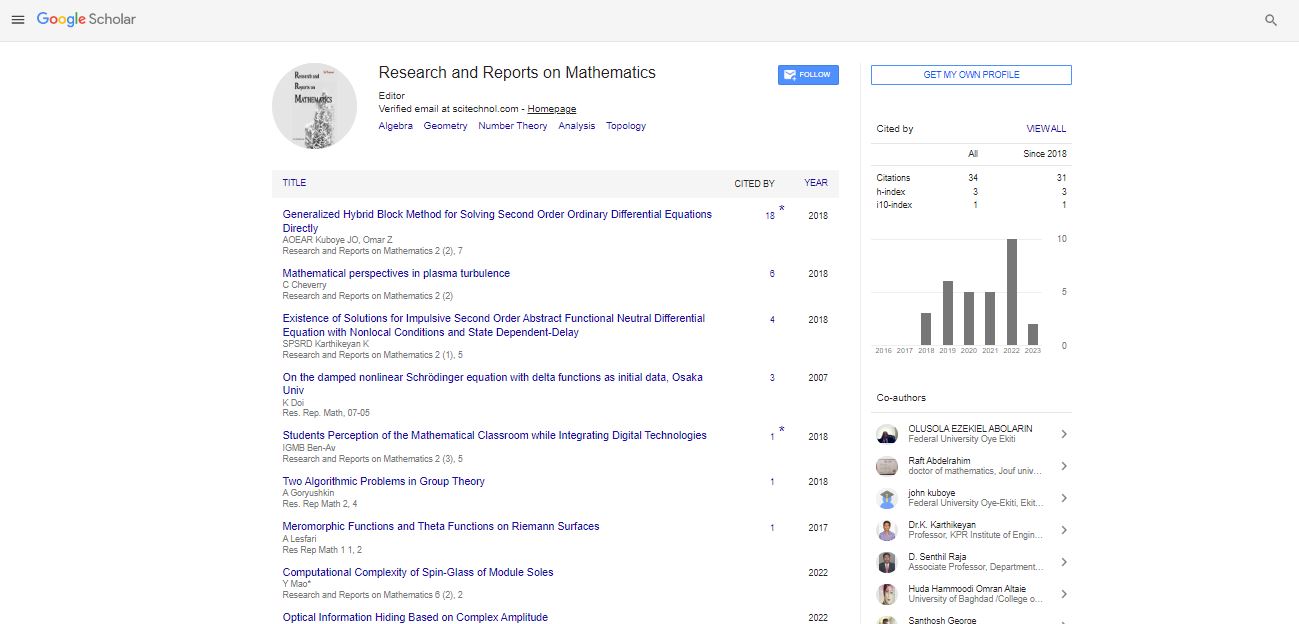Opinion Article, Res Rep Math Vol: 8 Issue: 1
Cryptocurrency Calculations: The Role of Mathematics in Block-chain
Nicole Nick*
Department of Mathematics and Sciences, University of Leicester, Leicester, United Kingdom
- *Corresponding Author:
- Nicole Nick
Department of Mathematics and Sciences,
University of Leicester,
Leicester,
United Kingdom
E-mail: nicole123@gmail.com
Received date: 27 October, 2023, Manuscript No. RRM-23-118503;
Editor assigned date: 30 October, 2023, PreQC No. RRM-23-118503 (PQ);
Reviewed date: 13 November, 2023, QC No. RRM-23-118503;
Revised date: 11 January, 2024, Manuscript No. RRM-23-118503 (R);
Published date: 18 January, 2024, DOI: 10.4172/rrm.1000230
Citation: Nick N (2024) Cryptocurrency Calculations: The Role of Mathematics in Block-chain. Res Rep Math 8:1.
Description
Crypto-currencies, powered by block-chain technology, have disrupted traditional finance and emerged as a global financial force. At the heart of this innovation lies a robust mathematical foundation. This manuscript delves into the intricate relationship between mathematics and block-chain technology, unraveling the cryptographic techniques, consensus algorithms, and financial mathematics that underpin crypto-currencies. We explore the mathematical principles governing transactions, security, and decentralization in block-chain systems, shedding light on the pivotal role of mathematics in ensuring the trust, transparency, and efficiency of crypto-currencies.
Crypto-currencies have redefined the landscape of finance and digital transactions. The rise of Bitcoin and the subsequent proliferation of crypto-currencies have been accompanied by an increasing reliance on mathematical concepts and principles to ensure the security, functionality, and reliability of these digital assets.
The role of mathematics in block-chain is a fascinating exploration of how mathematical principles underpin the architecture, security, and reliability of block-chain technology. This manuscript delves into the intricate relationship between mathematics and the block-chain, shedding light on the cryptographic techniques, consensus algorithms, and mathematical models that are instrumental in ensuring the integrity of decentralized ledgers. From public key cryptography to consensus mechanisms like proof of work and proof of stake, the manuscript illustrates how mathematics plays a pivotal role in establishing trust, transparency, and the immutability of block-chain networks. By decoding the mathematical foundations of block-chain, readers gain a deeper understanding of the mathematical rigor that powers the digital revolution.
Public key cryptography forms the bedrock of crypto-currency security. We delve into the mathematical framework that allows users to have a public key for transactions and a private key for signing those transactions securely.
Mathematical algorithms underlie the creation of digital signatures, which verify the authenticity of transactions and prevent tampering.
These cryptographic signatures provide mathematical proof of the ownership of digital assets.
Consensus mechanisms
Proof of work, a consensus algorithm used in Bitcoin, relies on mathematical puzzles to validate and secure transactions. Miners solve these complex mathematical problems to add new blocks to the blockchain, thus ensuring the integrity of the network.
Proof of stake is another consensus algorithm that uses a mathematical approach based on participants' stakes to validate transactions. It offers an alternative to PoW and reduces the energy consumption associated with mining.
Transaction mathematics
We explore the mathematical process behind transaction verification, including the validation of digital signatures and the confirmation of sufficient funds for a transaction to be added to the block-chain.
The process of crypto-currency mining involves solving mathematical problems and finding a solution known as the "proof of work." This solution is validated by the network, and the miner is rewarded for their mathematical effort.
Mathematical cryptography ensures the security of block-chain networks, from securing private keys to hashing algorithms and Merkle trees. These cryptographic techniques are at the core of protecting crypto-currency assets.
Financial mathematics plays a significant role in determining the economic viability and stability of crypto-currencies. We explore concepts like market valuation, volatility, and risk management, all of which are governed by mathematical models.
Decentralization, a hallmark of block-chain technology, is underpinned by consensus algorithms and mathematical principles that foster trust without the need for intermediaries. The mathematics of block-chain ensures transparency and immutability.
As the crypto-currency and block-chain landscape continues to evolve, mathematical innovation remains crucial. Challenges such as scalability, privacy, and interoperability will demand novel mathematical solutions, pushing the boundaries of what is possible in this space.
Conclusion
Crypto-currency calculations are integral to the success and reliability of block-chain technology. The marriage of mathematics and finance in the form of crypto-currencies has reshaped the way we perceive and utilize digital assets. Understanding the mathematical underpinnings of block-chain not only demystifies this technology but also highlights the vital role of mathematical rigor in securing the future of finance.
 Spanish
Spanish  Chinese
Chinese  Russian
Russian  German
German  French
French  Japanese
Japanese  Portuguese
Portuguese  Hindi
Hindi 